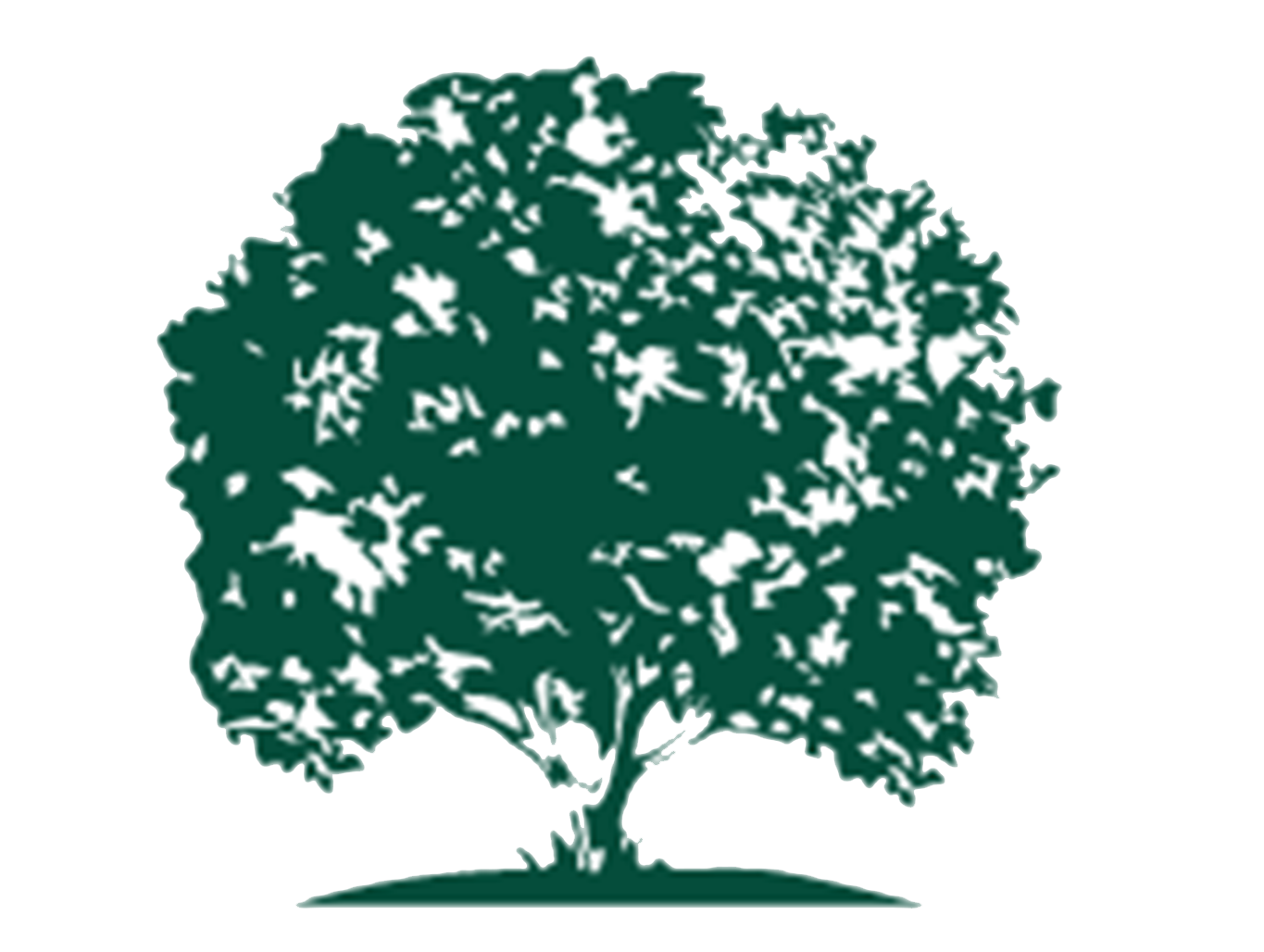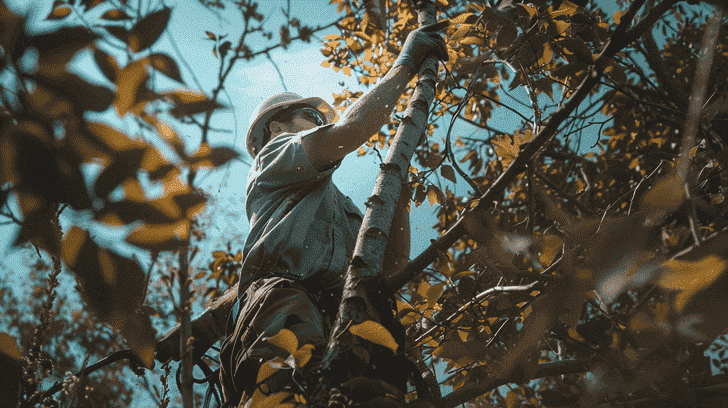The Importance of Protecting Trees During Trimming
Protecting trees during trimming is essential for maintaining biodiversity, ecosystem balance, and tree health. Trees offer habitat for wildlife, prevent erosion, and purify the air by sequestering carbon dioxide.
Ensuring proper pruning techniques and safeguards against diseases and pests is necessary. Preserving trees intact supports wildlife habitat and natural defenses.
Hiring qualified professionals, understanding tree biology, and using precise cuts are key for healthy tree growth.
Selecting the right tools and maintaining equipment ensure safe and effective trimming. Safety measures like proper gear usage and cutting techniques are important.
Learn more about the importance of preserving trees during trimming to sustain ecosystem health and tree longevity.
Understanding Tree Health
To guarantee the well-being of your trees, understanding their health is vital.
Knowing the pivotal role trees play in ecosystems, recognizing the benefits healthy trees bring, and being aware of common threats to tree health are essential for effective tree care and maintenance.
The role of trees in ecosystems
Within ecosystems, trees play an essential role in maintaining biodiversity and providing essential habitat for various species. Tree canopies offer shelter and nesting sites for birds and other animals, while their root systems help prevent soil erosion by stabilizing the ground.
Trees are pivotal for carbon sequestration, absorbing carbon dioxide from the atmosphere and storing it. Additionally, trees support biodiversity by providing food and shelter for a wide range of organisms, contributing to the overall health of ecosystems.
Benefits of healthy trees
Healthy trees provide numerous benefits to the environment, from purifying the air to enhancing the beauty of landscapes. When trees are well-maintained, they offer even more advantages:
- Tree pruning: Regular pruning promotes tree health by removing dead or diseased branches, allowing for new growth.
- Soil nutrients: Trees contribute to soil health by cycling nutrients, aiding in water retention and preventing erosion.
- Tree canopy: A healthy tree canopy provides shade, reducing energy costs and creating habitats for various wildlife.
Understanding the importance of maintaining the root system, identifying and treating tree diseases promptly, and preserving the overall health of trees is essential for maximizing these benefits and ensuring a thriving ecosystem.
Common threats to tree health
Maintaining the vitality of trees involves being vigilant against various threats that can compromise their health and longevity.
Tree diseases can weaken trees, making them more susceptible to other stressors. Invasive species, such as pests or aggressive plants, can outcompete native species for resources, harming tree health. Soil compaction from heavy machinery and foot traffic can reduce root growth and nutrient uptake.
Air pollution, including gases and particulate matter, can damage tree foliage and hinder photosynthesis. Understanding and mitigating these common threats are essential in safeguarding the well-being of trees in urban and natural environments.
Importance of Preserving Trees During Trimming
When trimming trees, it’s important to maintain their structure and integrity to guarantee their long-term health and stability.
By preserving trees during trimming, you help protect them against diseases and pests that can harm their overall well-being.
Additionally, safeguarding trees maintains their role as essential habitats for various wildlife species in your area.
Maintaining tree structure and integrity
In order to uphold the structural integrity of trees, meticulous attention must be paid during the trimming process. When it comes to maintaining tree structure and integrity, consider the following:
- Branch Structure: Guarantee proper pruning techniques to promote healthy branch formation.
- Tree Stability: Trim strategically to maintain the balance and stability of the tree.
- Pruning Techniques: Employ correct methods to prevent damage and encourage new growth.
Protecting against diseases and pests
To safeguard your trees from diseases and pests, it’s important to prioritize preservation efforts during the trimming process.
Preventing infestations and ensuring disease resistance are essential aspects of maintaining tree health.
Proper pruning techniques play a significant role in pest management and overall tree well-being.
By carefully trimming your trees, you can promote their natural defenses against potential diseases and pests.
Regular maintenance not only helps in preventing infestations but also boosts the tree’s ability to ward off harmful organisms.
When conducting trimming activities, consider the impact on the tree’s health and take precautionary measures to minimize stress.
Preserving habitat for wildlife
Preserving habitat for wildlife becomes an important consideration when trimming trees to maintain a balanced ecosystem. By preserving trees during trimming, you contribute to:
- Wildlife conservation, tree trimming: Maintaining trees intact provides shelter and nesting sites for various animal species.
- Biodiversity protection, tree care: Trees support a diverse range of organisms, from insects to birds, contributing to overall ecosystem health.
- Habitat preservation, tree maintenance: Trimming trees thoughtfully guarantees that the natural habitat remains undisturbed, allowing wildlife to thrive in their natural environment.
Protecting trees during trimming not only enhances the beauty of your surroundings but also plays a significant role in sustaining the delicate balance of the ecosystem, supporting wildlife habitat for generations to come.
Tips for Preserving Trees During Trimming
When preserving trees during trimming, it’s essential to hire qualified professionals who have a deep understanding of tree biology and growth patterns. By utilizing proper trimming techniques, you can guarantee the health and longevity of your trees.
Hiring qualified professionals
For the best results when it comes to preserving trees during trimming, making sure you hire qualified professionals is essential.
When looking for experts in tree care and pruning, consider the following:
- Proper Pruning Techniques: Qualified professionals know the correct methods to prune trees without causing damage.
- Expert Arborists: Hiring certified arborists guarantees that individuals with the right expertise handle the trimming process.
- Tree Care Knowledge: Professionals well-versed in tree biology and growth patterns can provide the best care for your trees.
Choosing skilled professionals for tree trimming not only enhances the health and aesthetics of your trees but also prevents any potential harm that improper trimming can cause.
Understanding tree biology and growth patterns
To guarantee the health and longevity of your trees during trimming, understanding their biology and growth patterns is essential. Tree growth is influenced by factors such as species, age, and environmental conditions.
When pruning, it’s important to take into account proper techniques to avoid harming the tree. Understanding branch structure helps in identifying the right branches for removal without causing damage.
Additionally, being aware of root systems is important as excessive pruning can affect a tree’s stability and nutrient absorption.
Tree physiology plays a significant role in how trees respond to trimming, impacting their overall health. By grasping these aspects of tree biology and growth patterns, you can ensure that trimming practices promote healthy tree development and longevity.
Using proper trimming techniques
Utilize precise pruning cuts to guarantee the health and vitality of your trees during trimming. Proper pruning is essential for maintaining tree structure and promoting healthy growth patterns.
Here are three key tips to help you preserve your trees effectively:
- Understand the Basics: Familiarize yourself with the fundamentals of proper pruning techniques to make sure you’re making the right cuts.
- Focus on Tree Health: Prioritize the removal of dead or diseased branches to promote the growth of new, healthy branches.
- Use the Right Tools: Select the appropriate tools for the job to make clean cuts that support faster healing and reduce the risk of damage to the tree.
Tools and Equipment for Tree Trimming
When trimming trees, selecting the appropriate tools is essential for the task at hand.
Regular maintenance of your equipment guarantees top performance and safety.
Using tools properly helps minimize the risk of harming the trees during the trimming process.
Selecting the right tools for the job
Selecting the appropriate tools and equipment for tree trimming is essential for ensuring the job is done effectively and safely.
When it comes to tree care, having the right tools can make a significant difference. Here are three key items worth noting:
- Pruning Shears: Ideal for making precise cuts and shaping small branches.
- Loppers: Great for cutting thicker branches with ease and precision.
- Chainsaw: Essential for larger branches or tree trunks that require heavier cutting.
Ensuring equipment is properly maintained
Proper maintenance of your tree trimming equipment is crucial to guarantee top performance and longevity. Regularly inspecting and caring for your tools not only secures your safety but also prevents tree damage.
Follow safety protocols and precautions to minimize the risk of injury and maximize efficiency. By incorporating proper tool use techniques and adhering to maintenance schedules, you can protect both yourself and the trees you work on.
| Equipment Maintenance | Safety Protocols |
| Regular inspection | Follow guidelines |
| Lubrication | Wear protective gear |
| Blade sharpening | Use tools as intended |
Using equipment safely to minimize damage to trees
To guarantee minimal damage to trees while trimming, it’s essential to use tree trimming equipment safely and effectively. Here are three vital points to keep in mind:
- Safety Precautions: Always wear appropriate safety gear such as gloves, goggles, and helmets to protect yourself and prevent accidents.
- Equipment Maintenance: Regularly inspect and maintain your tools to make sure they’re in good working condition, reducing the risk of malfunctions that could harm the tree.
- Proper Techniques: Learn and employ correct cutting techniques to avoid unnecessary damage to the tree, such as making clean cuts and avoiding stripping bark.
Conclusion
In closing, keep in mind that trees are living organisms that play a vital role in our ecosystem. When trimming trees, it’s essential to prioritize their health and well-being to guarantee they continue to thrive.
By following the tips and using the proper tools, you can preserve the beauty and benefits of trees for generations to come.
So next time you reach for those pruning shears, remember – tree trimming isn’t just a task, it’s a responsibility.







